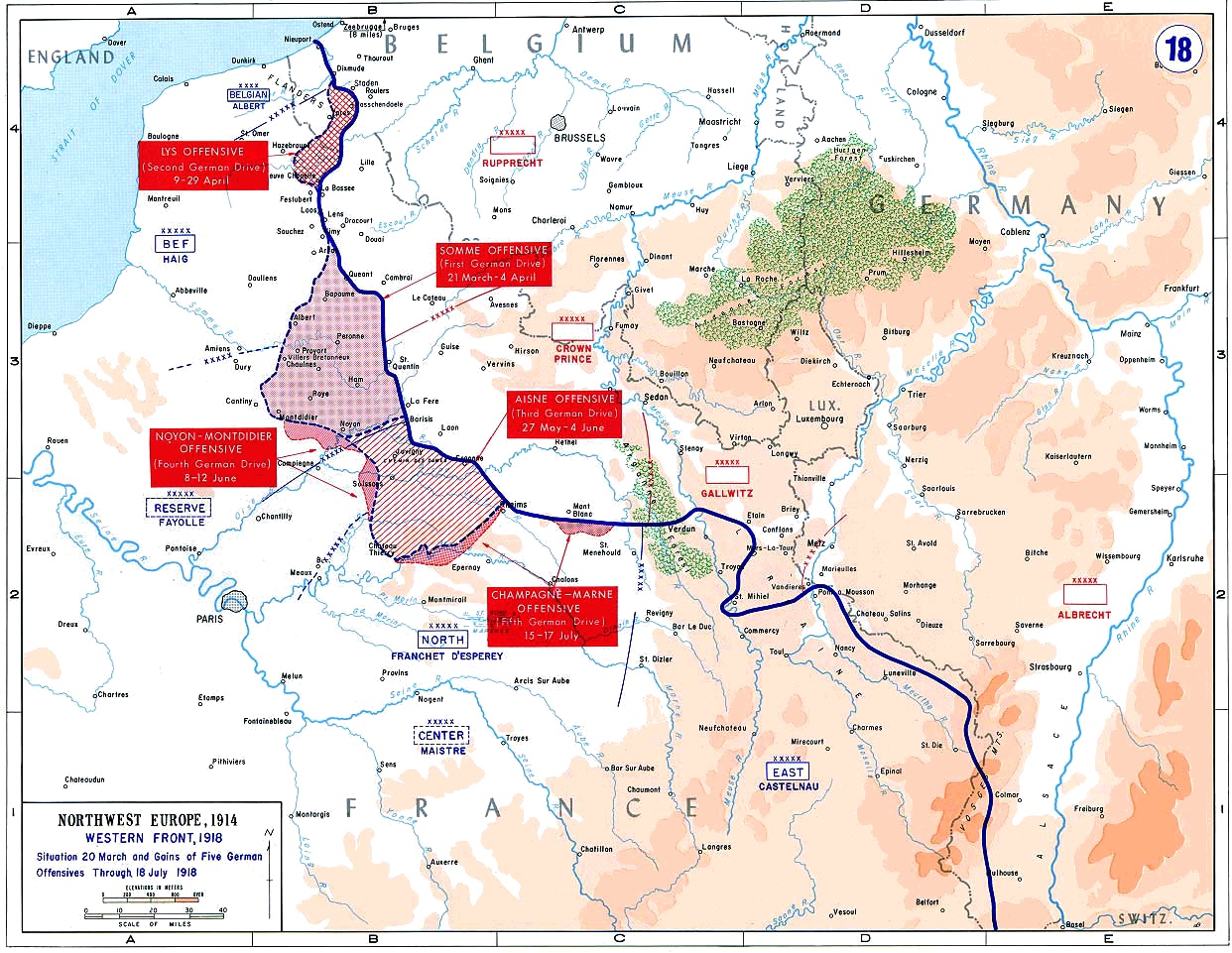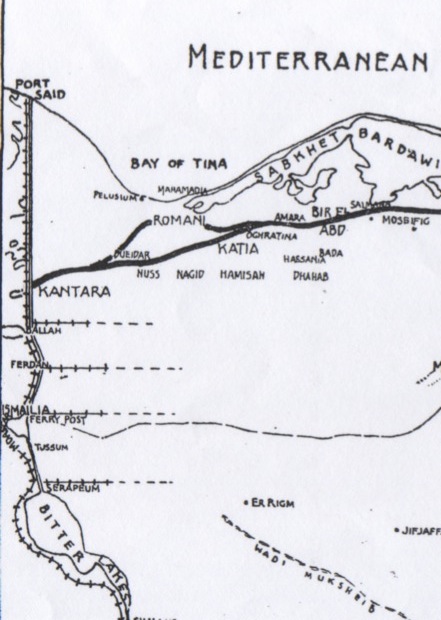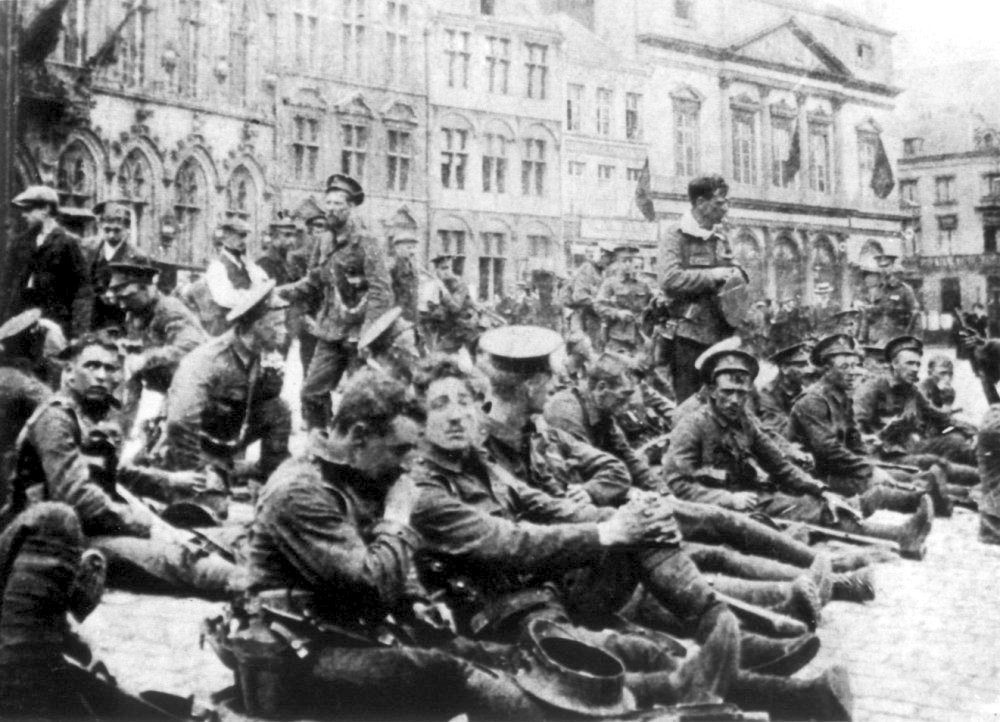|
Canada's Hundred Days
Canada's Hundred Days was the name given to the series of attacks made by the Canadian Corps between 8 August and 11 November 1918, during the Hundred Days Offensive of World War I by the French after the war. Reference to this period as Canada's Hundred Days is due to the role that the Canadian Corps repeatedly played as a spearhead during offensives. During this time, the Canadian Corps fought as part of the British Fourth Army in the Battle of Amiens, then as part of the British First Army in the Second Battle of the Somme, Battle of the Scarpe, Battle of the Canal du Nord, Battle of Cambrai, Battle of the Selle, Battle of Valenciennes and finally at Mons, on the final day of combat before the Armistice of 11 November 1918. In terms of numbers, during those 96 days the Canadian Corps' four over-strength or "heavy" divisions totalling roughly 100,000 men, engaged and defeated or put to flight elements of 47 German divisions, which represented one quarter of the German forces ... [...More Info...] [...Related Items...] OR: [Wikipedia] [Google] [Baidu] |
Canadian Corps
The Canadian Corps was a World War I corps formed from the Canadian Expeditionary Force in September 1915 after the arrival of the 2nd Canadian Division in France. The corps was expanded by the addition of the 3rd Canadian Division in December 1915 and the 4th Canadian Division in August 1916. The organization of a 5th Canadian Division began in February 1917 but it was still not fully formed when it was broken up in February 1918 and its men used to reinforce the other four divisions. The majority of soldiers of the Canadian Corps were British-born Canadians until near the end of the war, when the number of those of Canadian birth who had enlisted rose to 51 percent. They were mostly volunteers, as conscription was not implemented until the end of the war (''see'' Conscription Crisis of 1917). Ultimately, only 24,132 conscripts made it to France before 11 November 1918. In the later stages of the war the Canadian Corps was regarded by friend and foe alike as one of the most effec ... [...More Info...] [...Related Items...] OR: [Wikipedia] [Google] [Baidu] |
Operation Michael
Operation Michael () was a major German military offensive during World War I that began the German spring offensive on 21 March 1918. It was launched from the Hindenburg Line, in the vicinity of Saint-Quentin, France. Its goal was to break through the Allied (Entente) lines and advance in a north-westerly direction to seize the Channel Ports, which supplied the British Expeditionary Force (BEF), and to drive the BEF into the sea. Two days later General Erich Ludendorff, the chief of the German General Staff, adjusted his plan and pushed for an offensive due west, along the whole of the British front north of the River Somme. This was designed to first separate the French and British Armies before continuing with the original concept of pushing the BEF into the sea. The offensive ended at Villers-Bretonneux, to the east of the Allied communications centre at Amiens, where the Allies managed to halt the German advance; the German Army had suffered many casualties and ... [...More Info...] [...Related Items...] OR: [Wikipedia] [Google] [Baidu] |
Douglas Haig, 1st Earl Haig
Field Marshal Douglas Haig, 1st Earl Haig (; 19 June 1861 – 29 January 1928) was a senior officer of the British Army. During the First World War he commanded the British Expeditionary Force (BEF) on the Western Front from late 1915 until the end of the war.Sheffield 2002, p. 21.Sheffield 2002, p. 263.Hart 2008, p. 2. Haig's military career included service in the War Office, where he was instrumental in the creation of the Territorial Force in 1908. In January 1917 he was promoted to the rank of Field Marshal, subsequently leading the BEF during the final Hundred Days Offensive. This campaign, in combination with the Kiel mutiny, the Wilhelmshaven mutiny, the proclamation of a republic on 9 November 1918 and revolution across Germany, led to the armistice of 11 November 1918. It is considered by some historians to be one of the greatest victories ever achieved by a British-led army. Haig gained a favourable reputation during the immediate post-war years, with his funer ... [...More Info...] [...Related Items...] OR: [Wikipedia] [Google] [Baidu] |
David Lloyd George
David Lloyd George, 1st Earl Lloyd-George of Dwyfor (17 January 1863 – 26 March 1945) was Prime Minister of the United Kingdom from 1916 to 1922. A Liberal Party (United Kingdom), Liberal Party politician from Wales, he was known for leading the United Kingdom of Great Britain and Ireland, United Kingdom during the First World War, for social-reform policies, for his role in the Paris Peace Conference (1919–1920), Paris Peace Conference, and for negotiating the establishment of the Irish Free State. Born in Chorlton-on-Medlock, Manchester, and raised in Llanystumdwy, Lloyd George gained a reputation as an orator and proponent of a Welsh blend of radical Liberal ideas that included support for Welsh devolution, the Disestablishment of the Church in Wales, disestablishment of the Church of England in Wales, equality for labourers and tenant farmers, and reform of land ownership. He won 1890 Caernarvon Boroughs by-election, an 1890 by-election to become the Member of Parliam ... [...More Info...] [...Related Items...] OR: [Wikipedia] [Google] [Baidu] |
Prime Minister Of The United Kingdom
The prime minister of the United Kingdom is the head of government of the United Kingdom. The prime minister Advice (constitutional law), advises the Monarchy of the United Kingdom, sovereign on the exercise of much of the Royal prerogative in the United Kingdom, royal prerogative, chairs the Cabinet of the United Kingdom, Cabinet, and selects its Minister of the Crown, ministers. Modern prime ministers hold office by virtue of their ability to command the confidence of the House of Commons of the United Kingdom, House of Commons, so they are invariably Member of Parliament (United Kingdom), members of Parliament. The office of prime minister is not established by any statute or constitutional document, but exists only by long-established Constitutional conventions of the United Kingdom, convention, whereby the monarch appoints as prime minister the person most likely to Confidence motions in the United Kingdom, command the confidence of the House of Commons. In practice, thi ... [...More Info...] [...Related Items...] OR: [Wikipedia] [Google] [Baidu] |
Sinai And Palestine Campaign
The Sinai and Palestine campaign was part of the Middle Eastern theatre of World War I, taking place between January 1915 and October 1918. The British Empire, the French Third Republic, and the Kingdom of Italy fought alongside the Arab Revolt in opposition to the Ottoman Empire, the German Empire, and the Austro-Hungarian Empire. It started with an Ottoman attempt at raiding the Suez Canal in 1915 and ended with the Armistice of Mudros in 1918, leading to the cession of Ottoman Syria. Fighting began in January 1915, when a German-led Ottoman force invaded the Sinai Peninsula, then occupied by the British as part of a Protectorate of Egypt, to unsuccessfully raid the Suez Canal. After the Gallipoli campaign, British Empire veterans formed the Egyptian Expeditionary Force (EEF) and Ottoman Empire veterans formed the Fourth Army, to fight for the Sinai Peninsula in 1916. In January 1917 the newly formed Desert Column completed the recapture of the Sinai at the Battle o ... [...More Info...] [...Related Items...] OR: [Wikipedia] [Google] [Baidu] |
British Expeditionary Force (World War I)
The British Expeditionary Force (BEF) was the formation of British army on the Western Front during World War I. They were sent by Britain to France in 1914 to aid in resisting the German invasion. Originally sent as six divisions the British Army to the Western Front during the First World War. Planning for a British Expeditionary Force began with the 1906–1912 Haldane Reforms of the British Army carried out by the Secretary of State for War Richard Haldane following the Second Boer War (1899–1902). The term ''British Expeditionary Force'' is often used to refer only to the forces present in France prior to the end of the First Battle of Ypres on 22 November 1914. By the end of 1914—after the battles of Mons, Le Cateau, the Aisne and Ypres—the existent BEF had been almost exhausted, although it helped stop the German advance.An alternative endpoint of the BEF was 26 December 1914, when it was divided into the First and Second Armies (a Third, Fourth and ... [...More Info...] [...Related Items...] OR: [Wikipedia] [Google] [Baidu] |
American Expeditionary Forces
The American Expeditionary Forces (AEF) was a formation of the United States Armed Forces on the Western Front (World War I), Western Front during World War I, composed mostly of units from the United States Army, U.S. Army. The AEF was established on July 5, 1917, in Chaumont, Haute-Marne, Chaumont, France under the command of then-major general John J. Pershing. It fought alongside French Army, British Army, Canadian Army, British Indian Army, New Zealand Army and Australian Army units against the Imperial German Army. A small number of AEF troops also fought alongside Italian Army units in 1918 against the Austro-Hungarian Army. The AEF helped the French Army on the Western Front during the Third Battle of the Aisne, Aisne Offensive (at the Battle of Château-Thierry (1918), Battle of Château-Thierry and Battle of Belleau Wood) in the summer of 1918, and fought its major actions in the Battle of Saint-Mihiel and the Meuse-Argonne Offensive in the latter part of 1918. Formatio ... [...More Info...] [...Related Items...] OR: [Wikipedia] [Google] [Baidu] |
Battle Of Soissons (1918)
The Battle of Soissons (1918) (also known as the Battle of the Soissonnais and of the Ourcq ()) was fought on the Western Front during World War I. Waged from 18 to 22 July 1918 between the French (with American and British assistance) and the German armies, the battle was part of the much larger Allied Aisne-Marne counter-offensive. It followed the final German Spring Offensive, Operation Marneschutz-Reims (also known as the ''Friedensturm'' or peace offensive). The primary objective of the attack was to cut both the Soissons – Château-Thierry road and the railroad running south from Soissons to Château-Thierry. As these were the main supply routes for the German forces in the Marne salient, cutting them would severely impair the Germans' ability to supply its armies defending it. This would force them to retreat and give up their gains. This battle marked the turning point of the war as the Germans would be on the defensive for the remainder of the conflict. B ... [...More Info...] [...Related Items...] OR: [Wikipedia] [Google] [Baidu] |
Supreme Allied Commander
Supreme Allied Commander is the title held by the most senior commander within certain multinational military alliances. It originated as a term used by the Allies during World War I, and is currently used only within NATO for Supreme Allied Commander Europe and Supreme Allied Commander Transformation. Historical titles World War I On 26 March 1918, the French marshal Ferdinand Foch was appointed Supreme Allied Commander, gaining command of all Allied forces everywhere, and coordinated the British, French, American, and Italian armies to stop the German spring offensive, the last large offensive of the German Empire. He was the one who accepted the German cessation of hostilities in his private train. On 16 April 1918, at his own request, Foch was appointed "Commander-in-Chief of the Allied Armies". Despite his promotion 19 days earlier, and the subsequent Beauvais Conference of 3 April 1918, he was not provided a title. He remedied this by making up his own title and by wr ... [...More Info...] [...Related Items...] OR: [Wikipedia] [Google] [Baidu] |
Ferdinand Foch
Ferdinand Foch ( , ; 2 October 1851 – 20 March 1929) was a French general, Marshal of France and a member of the Académie Française and French Academy of Sciences, Académie des Sciences. He distinguished himself as Supreme Allied Commander#World War I, Supreme Allied Commander on the Western Front during the World War I, First World War in 1918. A commander during the First First Battle of the Marne, Marne, First Battle of Ypres, Flanders and First Battle of Artois, Artois campaigns of 1914–1916, Foch became Supreme Allied Commander in late March 1918 in the face of the all-out German spring offensive. He successfully coordinated the French, British and American efforts, deftly handling his strategic reserves. He stopped the German offensive and launched a Hundred Days Offensive, war-winning counterattack. In November 1918, Marshal Foch accepted the German cessation of hostilities and was present at the Armistice of 11 November 1918. At the outbreak of war in August 1914 ... [...More Info...] [...Related Items...] OR: [Wikipedia] [Google] [Baidu] |







